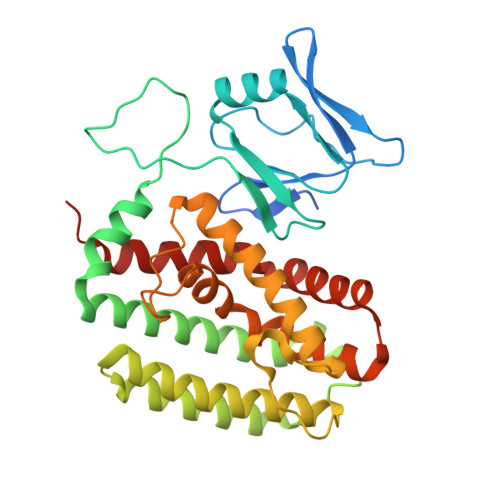Structural plasticity and in vivo activity of Cas1 from the type I-F CRISPR-Cas system.
Wilkinson, M.E., Nakatani, Y., Staals, R.H., Kieper, S.N., Opel-Reading, H.K., McKenzie, R.E., Fineran, P.C., Krause, K.L.(2016) Biochem J 473: 1063-1072
- PubMed: 26929403
- DOI: https://doi.org/10.1042/BCJ20160078
- Primary Citation of Related Structures:
5FCL - PubMed Abstract:
CRISPR-Cas systems are adaptive immune systems in prokaryotes that provide protection against viruses and other foreign DNA. In the adaptation stage, foreign DNA is integrated into CRISPR (clustered regularly interspaced short palindromic repeat) arrays as new spacers. These spacers are used in the interference stage to guide effector CRISPR associated (Cas) protein(s) to target complementary foreign invading DNA. Cas1 is the integrase enzyme that is central to the catalysis of spacer integration. There are many diverse types of CRISPR-Cas systems, including type I-F systems, which are typified by a unique Cas1-Cas2-3 adaptation complex. In the present study we characterize the Cas1 protein of the potato phytopathogen Pectobacterium atrosepticum, an important model organism for understanding spacer acquisition in type I-F CRISPR-Cas systems. We demonstrate by mutagenesis that Cas1 is essential for adaptation in vivo and requires a conserved aspartic acid residue. By X-ray crystallography, we show that although P. atrosepticum Cas1 adopts a fold conserved among other Cas1 proteins, it possesses remarkable asymmetry as a result of structural plasticity. In particular, we resolve for the first time a flexible, asymmetric loop that may be unique to type I-F Cas1 proteins, and we discuss the implications of these structural features for DNA binding and enzymatic activity.
Organizational Affiliation:
Department of Microbiology and Immunology, University of Otago, PO Box 56, Dunedin 9054, New Zealand Department of Biochemistry, University of Otago, PO Box 56, Dunedin 9054, New Zealand.














